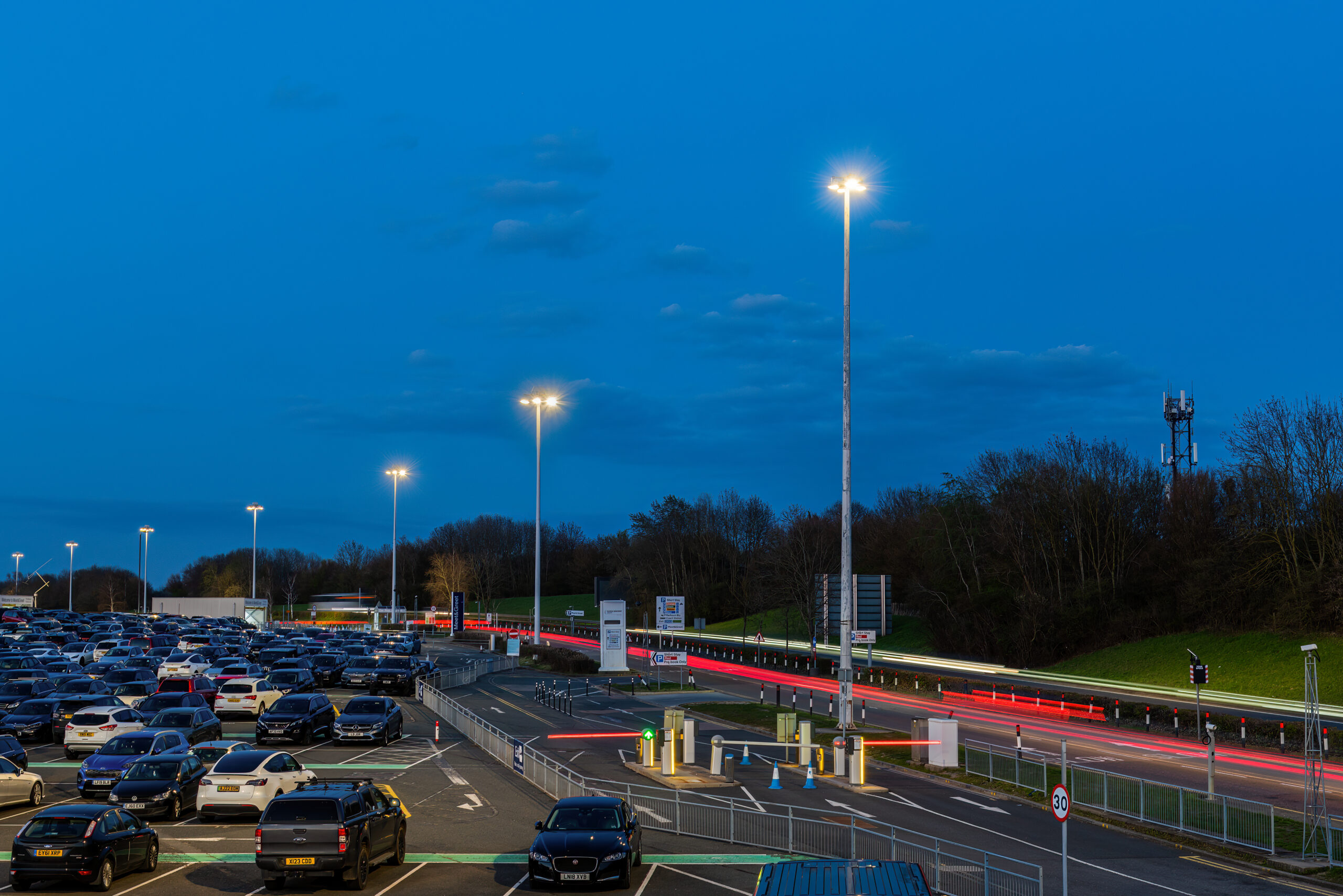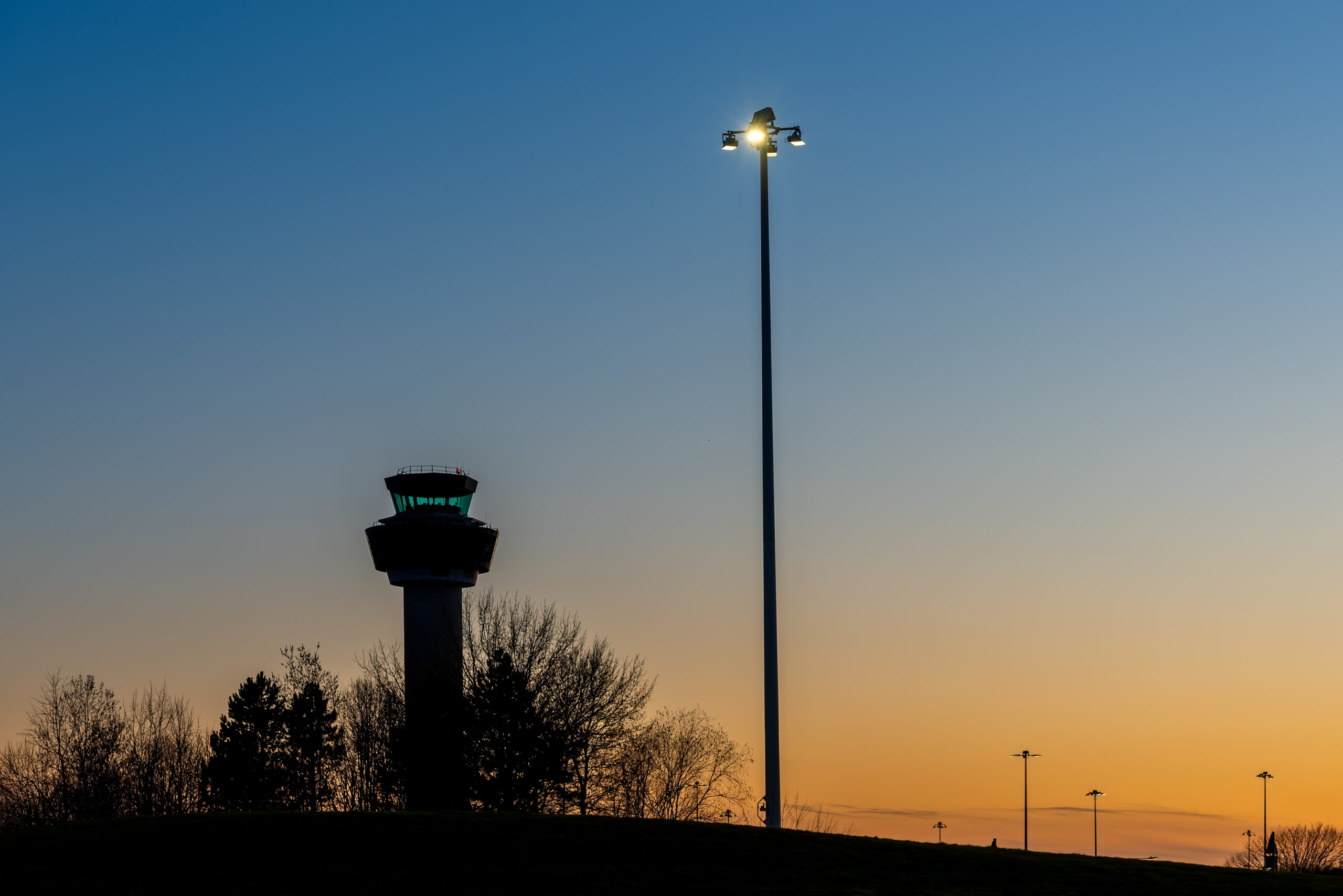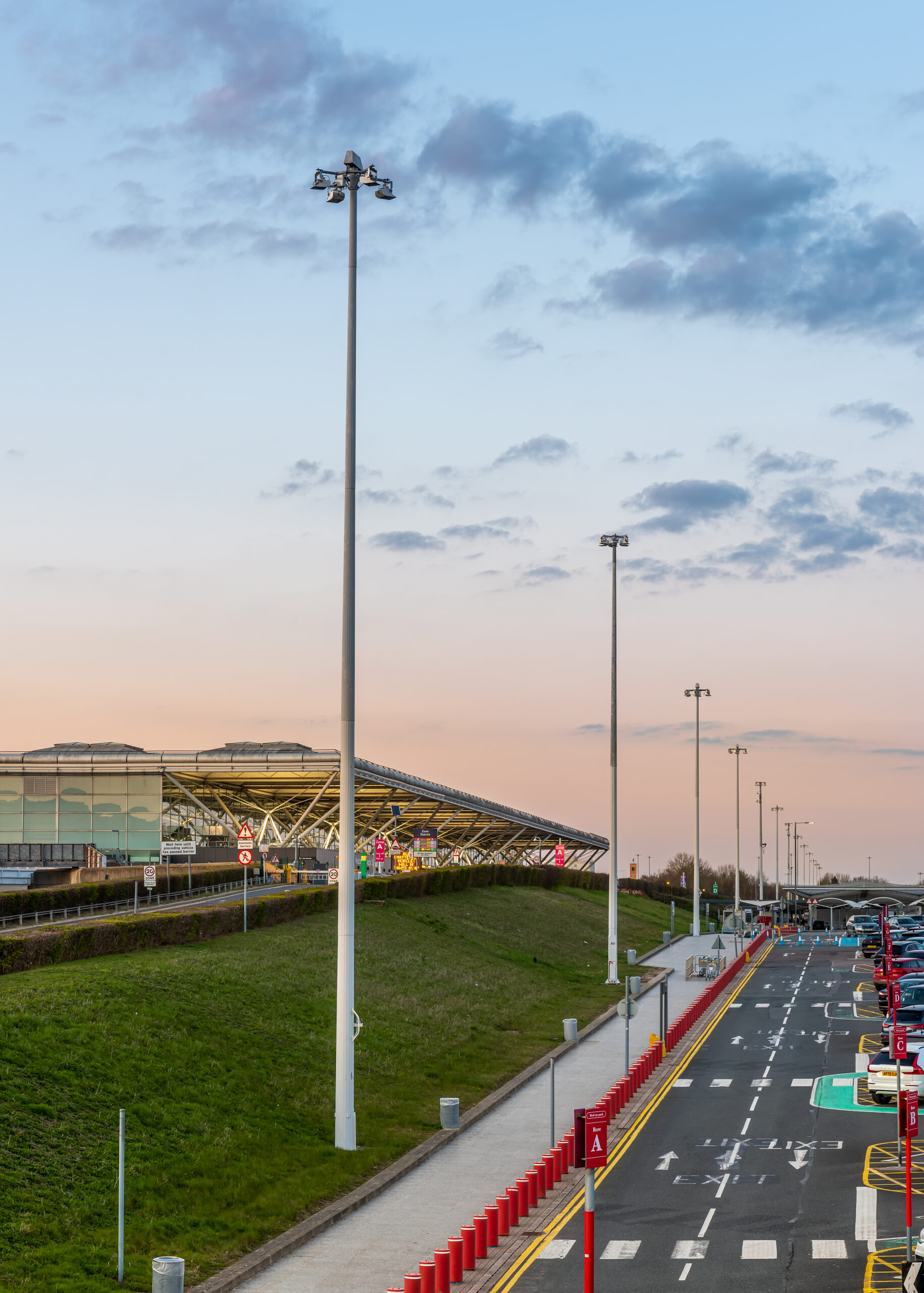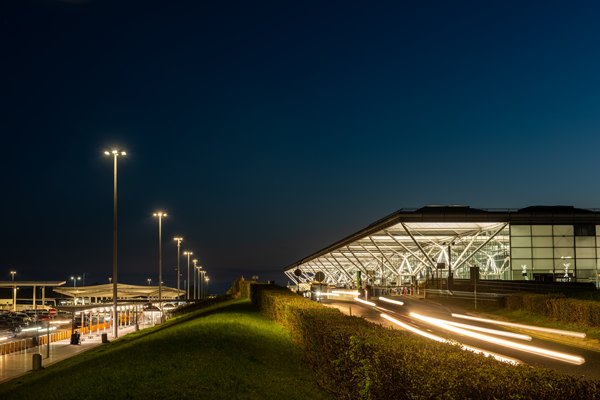Airport lighting, both airside and landside are important to an airports ability to operate safely and efficiently. Both elements have different operational and functional needs. The airside lighting needs to be efficient, deliver lighting to meet regulations and have simple maintenance regimes which minimise disruption to stand availability and aircraft movements. Landside lighting is the gateway to the airport for new and existing travellers and as such needs to provide them with comfortable surroundings in which they feel safe and can clearly identify entry and exit points for car parks and the terminal building. For many travellers the most stressful element of travelling is arriving at the airport, parking the car, and getting into the terminal building. Once they are in the terminal the process for passing through security and into a departure lounge is well established and sign posted. Tailoring lighting needs for each area is very important.
London Stansted Airport, a regional airport north of London, has replaced its airside and landside lighting to cater for both these needs in two separate projects.
Project one: Lighting the short stay car park – Innovative lighting solutions for energy savings, enhanced safety and security.

London Stansted Airport had clear objectives; to upgrade the floodlighting in its Short Stay Car Park to improve light quality and increase energy efficiency. Ideal for passengers requiring short-term airport parking, its prime location, directly opposite the airport terminal, is easily accessible by foot, placing check-in desks within walking distance. The 3,000-space parking with 24-hour CCTV coverage, floodlights, and regular security patrols, offers complete peace of mind to its customers, most notably, floodlights have played a crucial role in ensuring Stansted’s customer experience satisfaction rating (1) is high and places it alongside Cairns, Gold Coast and Melbourne airports. Therefore, when upgrading their technology for greater efficiency, the airport’s facilities team sought a high-quality low maintenance floodlight with precision optics.
Working with the facilities team at Stansted Airport, CU Phosco Lighting conducted a full site survey and lighting design, the FL800D floodlight was identified as the optimum solution. The floodlight offers a range of optical distribution options and uses AeroFlow® Cooling System to provide exceptional thermal management. Lumileds LUXEON® MX LEDs and AeroFlow® together deliver high lumen output with very low lumen depreciation over life, which minimizes energy and operating costs by reducing over lighting.
The Solution: LED floodlights offering optical range distribution
The survey also identified the need to replace the existing luminaire carriages to accommodate the new FL800D floodlights. Over a two-week period, 186No. FL800D’s across 32 high masts were installed on newly designed and manufactured replacement luminaire carriages.
Over 65% energy cost reduction

The installation of the FL800D floodlights has led to improved safety and security for car park users and reduced energy costs for the airport by 65%. The new floodlights provide exceptional light quality and energy efficiency, which has helped maintain the airport’s public safety record.
The car park has been awarded the Park Mark® a UK national standard which recognises the measures taken by Stansted airport to provide safe and secure car parking which deters criminal activity and anti-social behaviour.
Project two: London Stansted Airside Lighting reduces energy by 50%
The initial request was to replace the existing 750+ SON-T floodlights across Stansted Airport which have been in use since its official opening in 1991 with a combination of FL800R LED floodlights and P855 LED high mast luminaires including all airside masts and several landside masts. Key project objectives were to provide significant energy savings, improve light quality and provide increased control of the lighting installation. A comprehensive High Mast Survey was carried out by a CU Phosco Lighting Supervisor on all 87 High Masts. This identified that 8 masts on the Northside of the airport required replacing. CU Phosco Lighting delivered the project fully in-house including the design, supply and installation of LED luminaires and replacement high masts.
50% energy efficient savings with increased control
The FL800R & P855 LED solution offers a better quality of light for both the staff and public at the airport, with feedback from all staff being extremely positive: “Stansted Airport engaged CU Phosco Lighting to replace the existing High Mast Lighting across the airfield with LED technology… this reduced energy consumption by 1 million kWh per annum and significantly improved the quality of apron lighting. Engaging a contractor capable of the design, manufacture and installation facilitated a single point of contact for the works and proved effective in promptly managing and absorbing changes to scope. CU Phosco adopted a pragmatic and collaborative delivery approach with the airport, allowing the project to be completed ahead of schedule and within budget.” Daniel Vickers, London Stansted Airport
The project produced an energy saving of over 50% which will be further increased with the use of the Telensa Central Management System (CMS), which CU Phosco Lighting installed as part of the project. The increased control gives the airport the ability to dim or turn off individual stands/areas that are not in use. With the unique Raise and Lower masts, Stansted airport can also maintain their masts with ease. The winches inside the base of the masts enable the luminaire carriage to be lowered, minimising disruption to airport operations, and maintenance – whether it is a lighting outage or optical directional change due to environmental impacts, it can be done with ease and on site. Whereas other mast types would require a full shutdown of the area to maintain the lighting.
Stansted airport has benefitted aesthetically, operationally, and financially from the change to LED luminaires. Whilst their installation is reasonably large the same principles can be applied to any size of airport.

The Future of airport operational lighting
Over the last ten years, LED lighting has changed the industry, with greater optical range, increased energy efficiency and cost savings. Furthermore, with technological changes occurring every six months on average, LED also lends itself to projects where the ability to retrofit the latest LED boards is even more achievable. Couple this with a high mast, such as the CU Phosco Lighting Raise and Lower mast, where changes can be made simply and effectively, the maintenance and management of airport lighting, and the subsequent safety of airport operatives and passengers is achieved.
As airports grow the need for increased operational hours (where permitted) reduce the available time for maintenance. The Raise and Lower system used within the CU Phosco masts can be retrofitted to other masts (subject to survey and inspection) providing operators with simplified and more efficient maintenance opportunities which can be undertaken whilst aircraft are on or near stands.
Keith Henry is the General Manager of CU Phosco Australia Pty Ltd, is a wholly owned subsidiary of CU Phosco Lighting who in 2023 are celebrating a century of manufacturing luminaires, high masts, and poles. For more information, please contact us www.cuphosco.com aussales@cuphosco.com 0451 336 135















